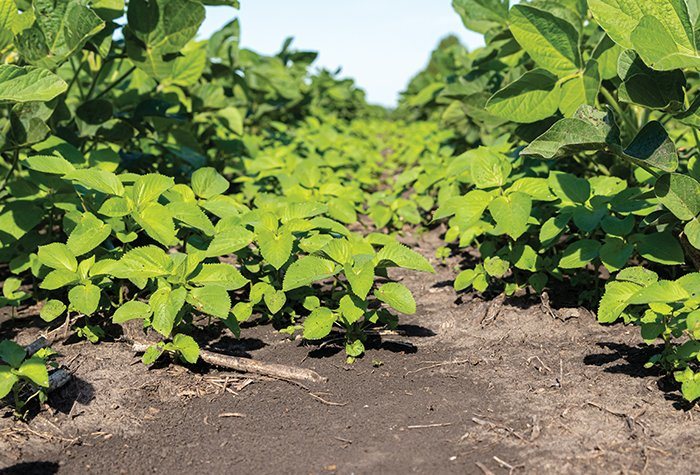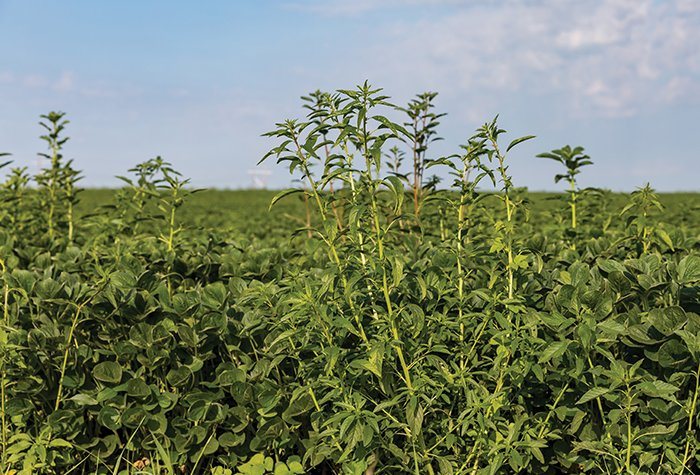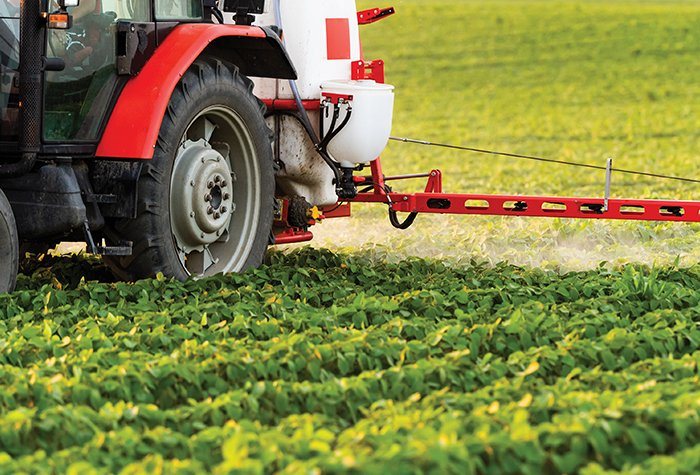Combat Rising Fertilizer Costs with Proper Weed Management
With fertilizer costs on the rise, controlling weeds is more important than ever.

No grower wants to see their fertilizer investment go to waste, so it’s important to maximize yield potential early in the season by protecting this high input cost. By removing early-season weed competition, growers maximize fertilizer inputs — helping their crops take up essential nutrients.
Weeds not only steal water and sunlight from crops, but also take vital nutrients. As fertilizer costs continue to rise, weeds will impact growers’ bottom lines in yet another major way.
What’s Behind Rising Prices?
Many factors contributed to increased fertilizer costs over the past year. “One is increased demand,” says Shawn Hock, U.S. corn herbicide product lead for Syngenta. “There were transportation and distribution challenges as well. It’s a combination of several things.”
Another thing contributing to high prices are the sanctions resulting from the continued conflict between Russia and Ukraine. Belarus is a large producer of potash, and Russia is a large producer of nitrogen and phosphorus. Both countries have struggled to get those products to the world market because of sanctions, and with more trade barriers predicted in the future, the world market may be further disrupted.
Fertilizer prices hit a 13-year high in the spring of 2022 but have slightly decreased since. Regardless, high fertilizer cost remains top of mind for many growers as they head into the next growing season.
The good news: There are ways growers can mitigate high costs and get the most out of their fertilizer investment.
How Can High Fertilizer Costs be Mitigated?
Growers may be tempted to reduce spending on other inputs, like herbicides, to offset the high cost of fertilizer. But to reach the high yields they’re striving for, a strong weed-management program is a necessity.
“In today’s world, farmers are trying to increase yields to achieve record profits,” Hock says. “However, there are a number of rising inputs costs — not just fertilizer, but also seed, crop protection, land, labor, equipment and machinery. While there’s a chance for record profit, growers are squeezed by rising input costs.”
Hock recommends that growers “leverage investment in variable expenses — like fertilizer, crop protection and seed — to increase yield potential.” An important piece of this puzzle is eliminating weeds before they steal vital nutrients, space, water and sunlight from the crop.
“I would view the control of weeds as a prerequisite to high yield and would argue that the higher the yield, the greater the negative impact of weeds,” says Fred Below, professor and crop physiologist at the University of Illinois.
Below points out that weed control starts with a good preemergence herbicide. “If you can stop a weed from germinating in the first place, then it’s not going to compete with the crop for nutrients,” he says.
Weeds reduce the crop’s access to sunlight, water, space and nutrients. A Syngenta study across 20 locations found that weeds as short as 2-4 inches consumed 13.4 pounds of nitrogen, 0.85 pounds of phosphorus and 16.8 lbs. of potassium.1 At the time of the study, this equated to roughly $24 per acre in lost fertilizer nutrients alone. The current impact is even greater with increased fertilizer prices.
In addition to using a quality preemergence herbicide, knowing when and where to place fertilizer helps unlock the full potential of the investment. “If you place fertilizer where the crop row is going to be or time it to coincide when the crop roots are available, you can improve its efficiency of uptake,” Below says.
Lastly, know which nutrients already exist in the soil and in what quantities before making decisions on fertilizer investment. A soil test indicates nutrient levels, including those of potassium and phosphorus, and helps growers avoid overspending on fertilizer. That knowledge informs growers on how best to spend their hard-earned dollars.
Should You Invest in a Weed Control Program?
When tackling tough weeds, implementing a full-season approach is important. Starting with a good preemergence herbicide containing multiple sites of action and following up with a post-emergence herbicide with residual control helps ensure weeds don’t get established and rob nutrients from the crop. Growers can carry that momentum into the offseason, keeping the weed seed bank low.
“When it comes to weed control, growers can take a multi-faceted approach,” Below says. “There are preemergent herbicides that prevent the weed from emerging in the first place. And then there are post-emergent herbicides, meaning the weed has emerged and growers are going to make an application in-season to control that weed.”
Hock reiterates the importance of using multiple active ingredients (AI) in an herbicide program. “Acuron® corn herbicide has four AIs, broad-spectrum weed control, long-lasting residual control and excellent crop safety,” he says. “Growers can protect their fertilizer investment by keeping the weeds controlled before they emerge with overlapping applications of this herbicide.”
Hock recommends growers apply their post-emergence herbicide on their second pass before weeds come up. As an alternate to Acuron, he recommends using a foundational preemergence herbicide like Lexar® EZ, Lumax® EZ or Calibra™ herbicides, followed by a post-emergence application of Acuron GT or Halex® GT herbicides. When it comes to soybean herbicide programs, growers should consider preemergence herbicides like Boundary® 6.5 EC and Tendovo® herbicides.
If growers can’t control weeds before they emerge, Hock suggests eliminating weeds before they reach 1-2 inches. However, weeds are already cutting into a growers’ fertilizer investments and stealing vital nutrients by that point. It is also important to check labels for application directions and best practices for herbicide-resistance management.
When making decisions for the new season, high input costs may tempt growers into looking for bundles or “deals.” But reducing upfront costs may also reduce yield potential. Ultimately, the growers who produce higher yields will have the greatest profits, Hock says. That starts with quality weed control and sound agronomic practices.
1Weed Nutrient Uptake Source: Approximately 20 Syngenta Learning Center Research locations between 2006-2008. Nutrients measured from samples taken from weeds 1-2” and 2-4” in height. Analysis completed by Midwest Labs, Omaha, NE. Period from weed emergence to removal at 1-2” in height was 10 days and 2-4” in height was 20 days. Cost of Weed Uptake Source: https://blogs.worldbank.org/opendata/fertilizer-prices-rise-moderately-2021. Calculations used 28% UAN as the nitrogen source; DAP-(18-46-0) as the phosphorus source and muriate of potash-(0-0-60) as the potash source.
4 Min Read
- In spring 2022, fertilizer prices hit a 13-year high.
- Nutrient-stealing weeds affect profit potential.
- A strong weed-management program helps crops, not weeds, use expensive fertilizer.


























